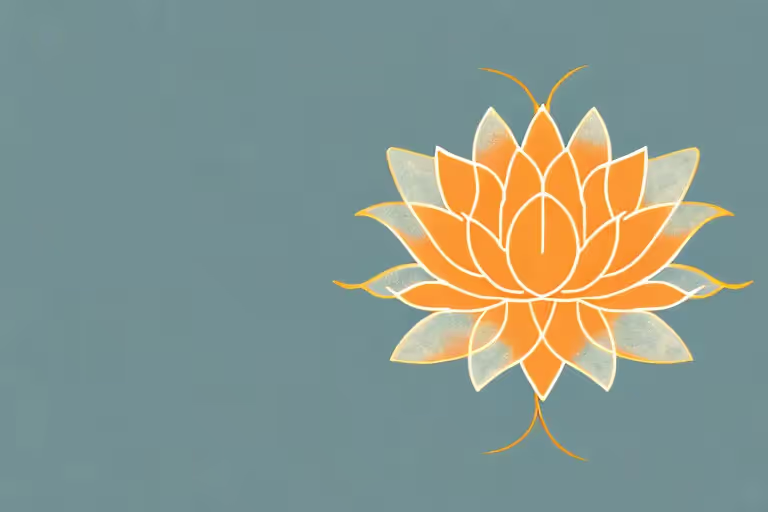In today's fast-paced world, balance can often feel unattainable. And yet, through Dialectical Behavior Therapy (DBT) and mindfulness, achieving equilibrium is more within reach than ever. This article delves into this dynamic duo, provides riveting insights, and guides you through five DBT mindfulness exercises that can pave the way to a more balanced life.
Understanding DBT and Mindfulness
The first step toward adopting these techniques is understanding what they are and how they work. Dialectical Behavior Therapy (DBT) and mindfulness are two practices that go hand in hand, each complementing and enhancing the other.
What is DBT?
DBT was initially developed to help individuals manage overwhelming emotions. Over time, it has evolved to address a wide array of mental health issues such as depression, anxiety, and personality disorders. The therapy emphasizes the cultivation of acceptance and change, helping individuals develop emotional and cognitive balance.
DBT is a comprehensive and evidence-based treatment approach that combines elements of cognitive-behavioral therapy, mindfulness, and dialectics. It was originally developed by psychologist Marsha M. Linehan in the late 1980s to treat individuals with borderline personality disorder who were at high risk for self-harm and suicide. Since then, DBT has been adapted for various populations and is now widely used in the treatment of a range of mental health conditions.
One of the key principles of DBT is the concept of dialectics, which refers to the integration of seemingly contradictory ideas or perspectives. In DBT, dialectics is used to help individuals find a balance between acceptance and change. It recognizes that change is necessary for growth and healing, while also acknowledging the importance of accepting oneself and one's current circumstances.
DBT consists of four main modules: mindfulness, distress tolerance, emotion regulation, and interpersonal effectiveness. These modules are taught in both individual therapy sessions and skills training groups. Through these modules, individuals learn practical skills to manage their emotions, cope with distressing situations, regulate their behavior, and improve their relationships.
Aura has the world’s largest and best collection of Meditations and hundreds of Coaches to choose from.
Try it Free!
The Role of Mindfulness in DBT
Mindfulness, a central component of DBT, is about staying present and fully engaged in the current moment. It invites an attitude of non-judgment and acceptance toward our experiences and feelings. Within the context of DBT, mindfulness serves as a vehicle to promote self-awareness, manage emotions, and bring about behavioral change.
Mindfulness has its roots in ancient meditation practices, but it has gained significant attention in recent years due to its effectiveness in reducing stress, improving mental well-being, and enhancing overall quality of life. In DBT, mindfulness skills are taught and practiced to help individuals develop greater awareness of their thoughts, emotions, and bodily sensations without getting caught up in judgments or reactions.
By practicing mindfulness, individuals learn to observe their thoughts and feelings without getting overwhelmed by them. This allows them to respond to challenging situations in a more skillful and adaptive way, rather than reacting impulsively or engaging in self-destructive behaviors. Mindfulness also helps individuals develop a sense of acceptance and compassion toward themselves, which is crucial for healing and growth.
Some of the mindfulness skills taught in DBT include mindful breathing, body scan meditation, and observing thoughts and emotions without attachment. These skills can be practiced both formally, through dedicated meditation sessions, and informally, by bringing mindful awareness to everyday activities such as eating, walking, or interacting with others.
Research has shown that practicing mindfulness can lead to numerous benefits, including reduced stress, improved emotional regulation, increased attention and focus, enhanced self-compassion, and greater overall well-being. In the context of DBT, mindfulness serves as a foundation for the other modules, providing individuals with a solid grounding from which they can effectively learn and apply the skills taught in therapy.
The Importance of Balance in Life
The idea of maintaining balance in life is about more than just avoiding the tipping point of stress and burnout. It’s about navigating our lives in a way that promotes well-being, fulfillment, and resilience. DBT and mindfulness provide invaluable tools for engendering this balance.
When we talk about balance in life, we often think of it as finding a middle ground between work and personal life. However, balance goes beyond just managing our time effectively. It also involves finding harmony in our physical, emotional, and mental well-being.
One aspect that contributes to balance is mindfulness. Mindfulness plays a crucial role in fostering balance. By grounding us in the present moment, mindfulness helps us to detach ourselves from the whirlwind of thoughts and emotions that often leaves us feeling overwhelmed. This detachment doesn't mean we suppress feelings; instead, it gives us the ability to manage and observe them from a balanced standpoint.
Imagine a tightrope walker gracefully making their way across a thin wire. They maintain balance by staying focused on the present moment, carefully placing one foot in front of the other. Similarly, mindfulness allows us to navigate the tightrope of life with grace and poise, finding stability amidst the chaos.
The Connection Between Mindfulness and Balance
Mindfulness is not just about being present; it's also about cultivating a non-judgmental attitude towards ourselves and others. When we approach life with a non-judgmental mindset, we are better able to accept and embrace the ups and downs that come our way. This acceptance creates a sense of balance, as we no longer resist or fight against the natural ebb and flow of life.
Furthermore, mindfulness helps us develop self-awareness, allowing us to recognize when we are leaning too much towards one extreme. For example, if we notice that we are becoming overly focused on work and neglecting our personal relationships, mindfulness reminds us to realign our priorities and create a more balanced approach.
In addition to mindfulness, Dialectical Behavior Therapy (DBT) also plays a significant role in promoting balance. DBT, through its core components - mindfulness, distress tolerance, emotional regulation, and interpersonal effectiveness - equips us with the skills needed to maintain that balance. These facets work in tandem to facilitate a state of equilibrium, allowing us to better navigate the turbulent waters of life.
How DBT Promotes Balance
Distress tolerance, one of the core components of DBT, teaches us how to cope with difficult emotions without resorting to unhealthy behaviors. By developing healthy coping mechanisms, we can avoid falling into destructive patterns that disrupt our balance.
Emotional regulation, another essential aspect of DBT, helps us understand and manage our emotions effectively. This skill allows us to respond to challenging situations in a balanced and composed manner, rather than reacting impulsively or being overwhelmed by our emotions.
Interpersonal effectiveness, the third component of DBT, focuses on improving our communication and relationship skills. When we can effectively express our needs, set boundaries, and resolve conflicts, we create healthier and more balanced connections with others.
By incorporating these DBT skills into our lives, we gain the tools necessary to maintain balance across various domains. We become adept at recognizing when we are veering off course and can make the necessary adjustments to bring ourselves back into a state of equilibrium.
Ultimately, balance is an ongoing process. It requires continuous self-reflection, self-care, and a willingness to adapt to life's ever-changing circumstances. By practicing mindfulness and utilizing the skills taught in DBT, we can cultivate a sense of balance that allows us to thrive in all aspects of our lives.
5 DBT Mindfulness Exercises
Now that we understand the theoretical underpinnings of DBT and mindfulness, let's delve into five specific exercises that can help you incorporate DBT mindfulness into your daily routine and achieve balance.
Exercise 1: Observing Your Breath
Breathing is a natural process, yet when we become mindful of this process, it can serve as an anchoring point for our attention. Simply spend a few minutes each day observing your breath. Notice the sensation of the air entering and leaving your body and observe without judgment or the desire to control.
As you observe your breath, you may start to notice the subtle changes in rhythm and depth. Pay attention to how your body responds to each breath, whether it's the rise and fall of your chest or the gentle expansion and contraction of your abdomen. By focusing on your breath, you can bring yourself into the present moment and cultivate a sense of calm and clarity.
It's important to remember that there is no right or wrong way to observe your breath. Each breath is unique, and each observation is an opportunity to deepen your connection with yourself and the present moment.
Exercise 2: Non-Judgmental Stance
Make an effort to observe your thoughts and feelings without judgment. There’s no right or wrong when it comes to your experiences, sensations, or emotions. By cultivating a non-judgmental stance, you create a space for acceptance and balance.
When you notice thoughts or feelings arising, try to simply observe them without attaching any labels or evaluations. Instead of labeling a thought as "good" or "bad," see if you can acknowledge it as just a passing mental event. By doing so, you can develop a greater sense of self-awareness and reduce the tendency to get caught up in judgments and self-criticism.
Remember, the goal of this exercise is not to suppress or ignore your thoughts and feelings, but rather to acknowledge them with curiosity and compassion. By adopting a non-judgmental stance, you can create a safe space within yourself to explore and understand your inner experiences.
Exercise 3: Mindful Eating
Make meal times an opportunity for mindfulness practice. Really take your time to savor every bite and to appreciate the textures, flavors, and aromas. By eating mindfully, we bring our full attention to the act of eating, transforming it into an enriching and balanced experience.
Before you begin eating, take a moment to observe the appearance of your food. Notice the colors, shapes, and arrangement on your plate. As you take your first bite, pay attention to the flavors and textures that unfold in your mouth. Chew slowly and deliberately, allowing yourself to fully experience each bite.
As you eat, try to bring awareness to the sensations in your body. Notice the feeling of hunger or fullness, the movement of your jaw and tongue, and the subtle changes in your body as it receives nourishment. By engaging all your senses in the act of eating, you can cultivate a deeper connection with your body and the food you consume.
Mindful eating can also help you develop a healthier relationship with food. By paying attention to your body's signals of hunger and fullness, you can become more attuned to your body's needs and make choices that support your overall well-being.
Exercise 4: Body Scan
Body scan practices can help us to become more aware of our physical sensations and experiences. As you do this exercise, visualize a scanner moving from the top of your head to the tips of your toes and observe each sensation it encounters.
Begin by finding a comfortable position, either sitting or lying down. Close your eyes and bring your attention to your breath, allowing yourself to relax and settle into the present moment. Starting at the top of your head, slowly scan down your body, paying attention to any areas of tension, discomfort, or relaxation.
As you scan each part of your body, take a moment to observe the sensations you encounter. Notice the feeling of your scalp, the warmth or coolness of your forehead, the softness or firmness of your shoulders. If you come across any areas of tension or discomfort, see if you can breathe into those areas and allow them to soften and release.
The body scan exercise can help you cultivate a deeper awareness of your physical self and promote relaxation and self-care. By regularly practicing this exercise, you can develop a greater sense of body awareness and learn to listen to the signals your body is sending you.
Exercise 5: Walking Meditation
Walking can be another great way to promote mindfulness. As you walk, turn your attention to your body and observe the sensations you feel with each step. Feel your foot making contact with the ground, the swing of your arms, the rhythm of your breath.
Find a quiet and peaceful place to walk, whether it's a park, a beach, or simply around your neighborhood. As you begin walking, bring your attention to your feet and the contact they make with the ground. Notice the sensations of each step, the pressure and movement as your foot rolls from heel to toe.
As you continue walking, expand your awareness to include the movement of your arms and the sensations in your body. Notice the feeling of the air against your skin, the sounds around you, and any sights that catch your eye. Allow yourself to fully immerse in the experience of walking, letting go of any distractions or worries.
Walking meditation can be a powerful way to bring mindfulness into your daily life. By incorporating this practice into your routine, you can transform a simple activity into a moment of presence and connection with yourself and the world around you.
Tips for Incorporating DBT Mindfulness Exercises into Your Routine
Like any new skill, incorporating DBT mindfulness exercises into your routine can take time and practice. Here are a few tips to aid in your journey.
Setting Aside Time for Mindfulness
It helps to set aside a specific time each day for your mindfulness practice. Early morning or late evening can be particularly suitable as these are times when you can typically minimize distractions.
Creating a Mindful Environment
Where you practice is just as important as what you practice. Choose a peaceful, comfortable space where you won’t be interrupted. The goal is to create an environment that nurtures tranquillity and encourages practice.
Incorporating DBT mindfulness into your life promises a pathway to balance and well-being. The Aura Health app offers a range of mindfulness practices, including DBT exercises, to support your journey. With a library of guided practices and resources, Aura Health can help you foster balance, increase resilience, and cultivate a more mindful, balanced life. Embrace the serenity that mindful living brings with the Aura Health app and see for yourself the transformation it ignites.
Aura is Your All In One App for Meditation, Mindfulness Wellbeing
Find peace every day with one app for your whole well-being. There is no one-size-fits-all solution to mental well-being. Aura is the first all-in-one wellness app that learns how to best help you. Discover an endless library of expert-created tracks for your well-being, all taught by the world’s best coaches, therapists, and storytellers. With Aura's personalized recommendations, you can find peace every morning, day and night.



.webp)






.avif)

%20(1).avif)


.avif)
.avif)
.webp)


.avif)


















































































































.avif)

















.svg)









